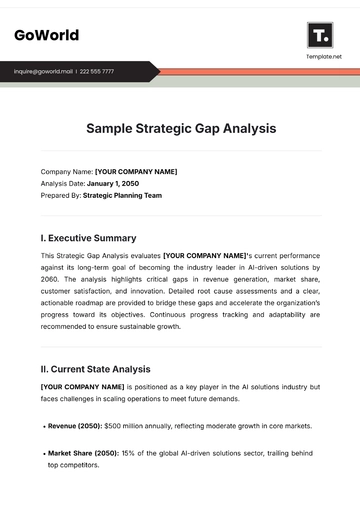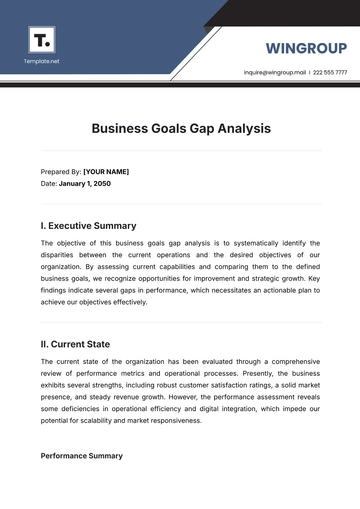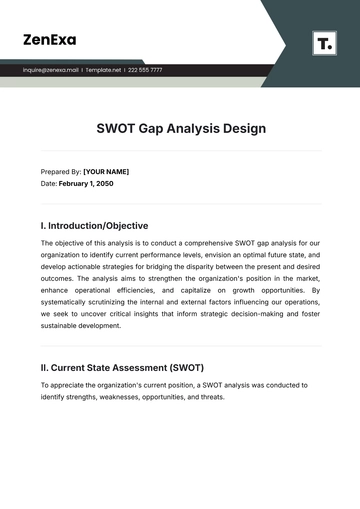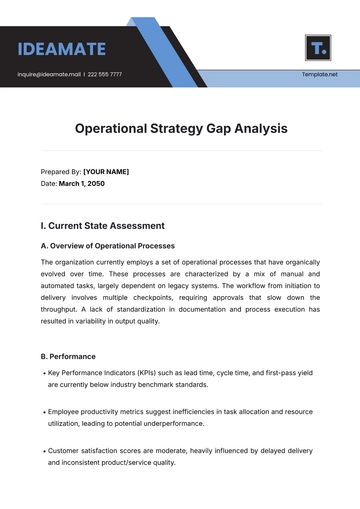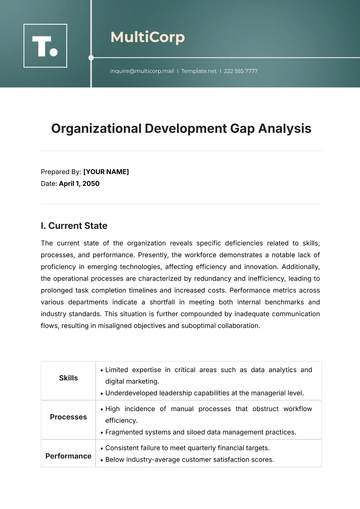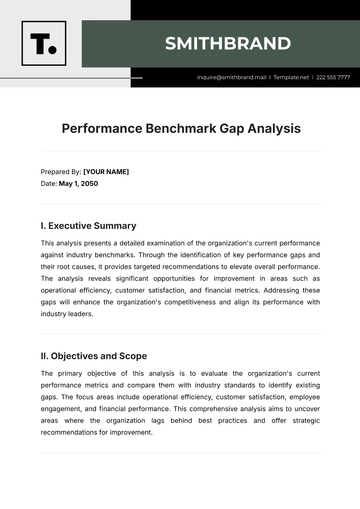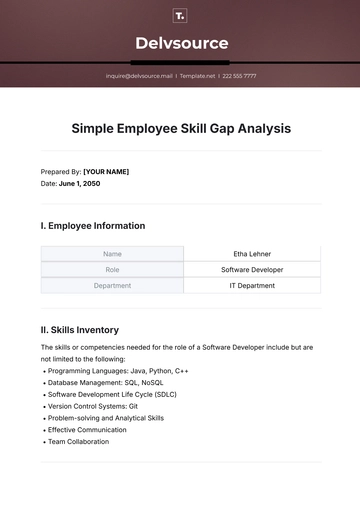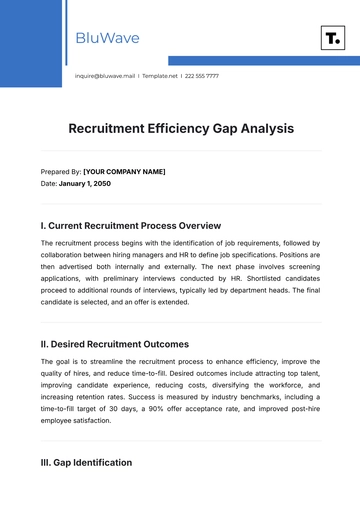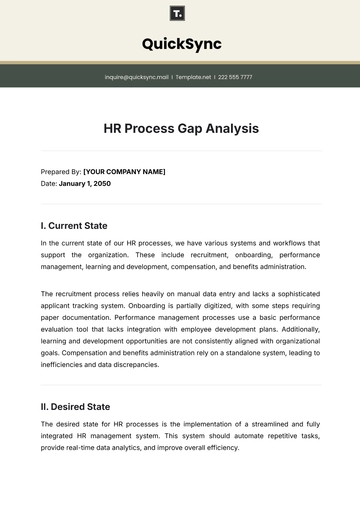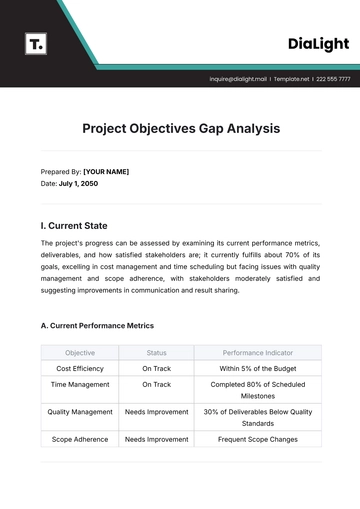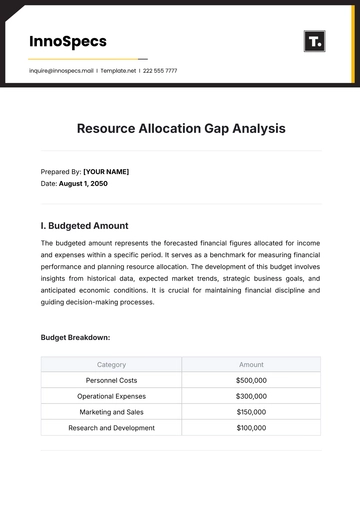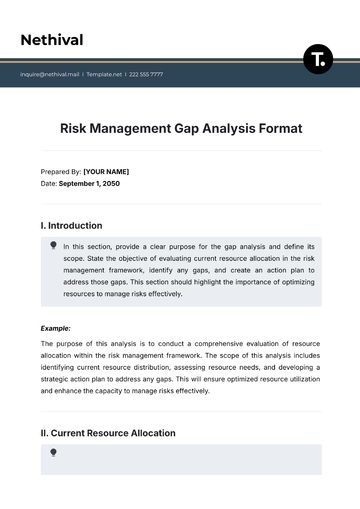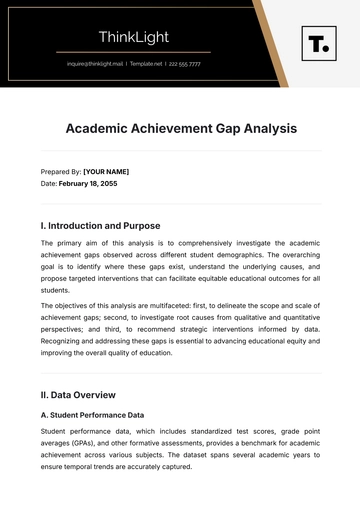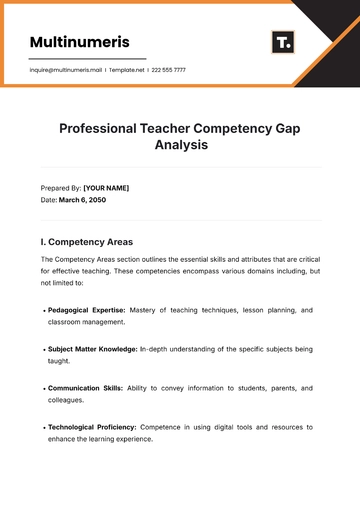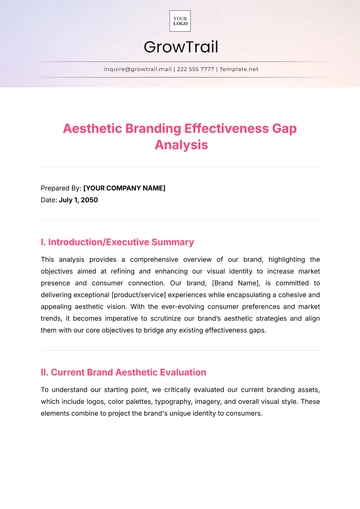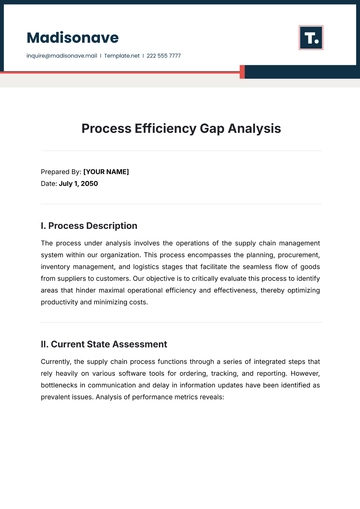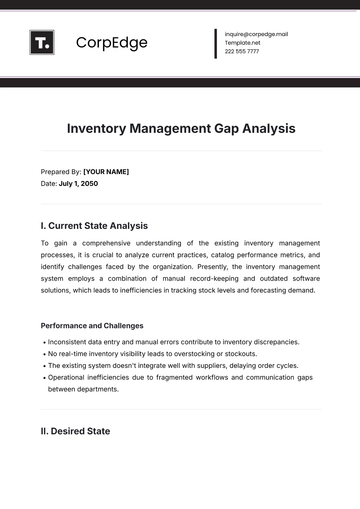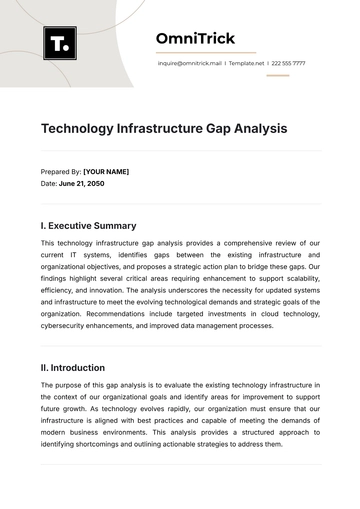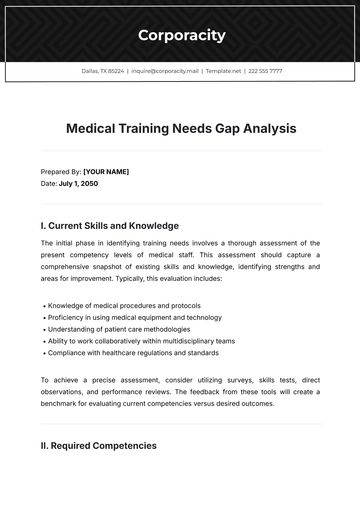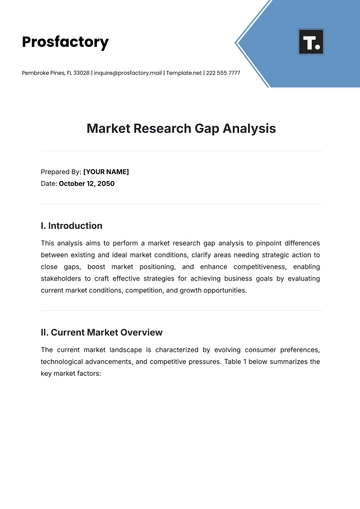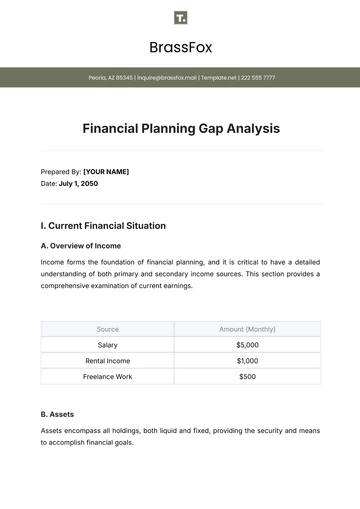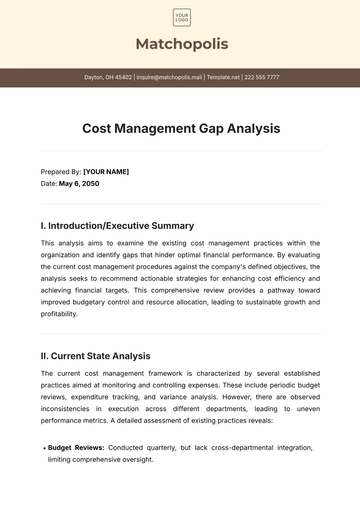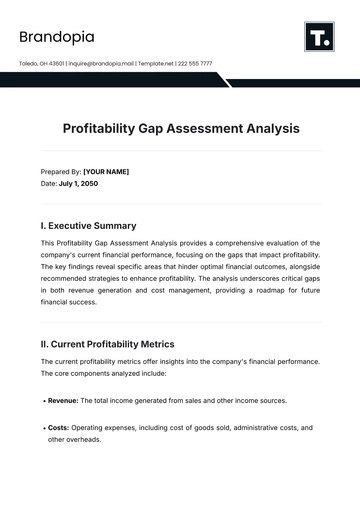Free Annual Sales Training Effectiveness Analysis
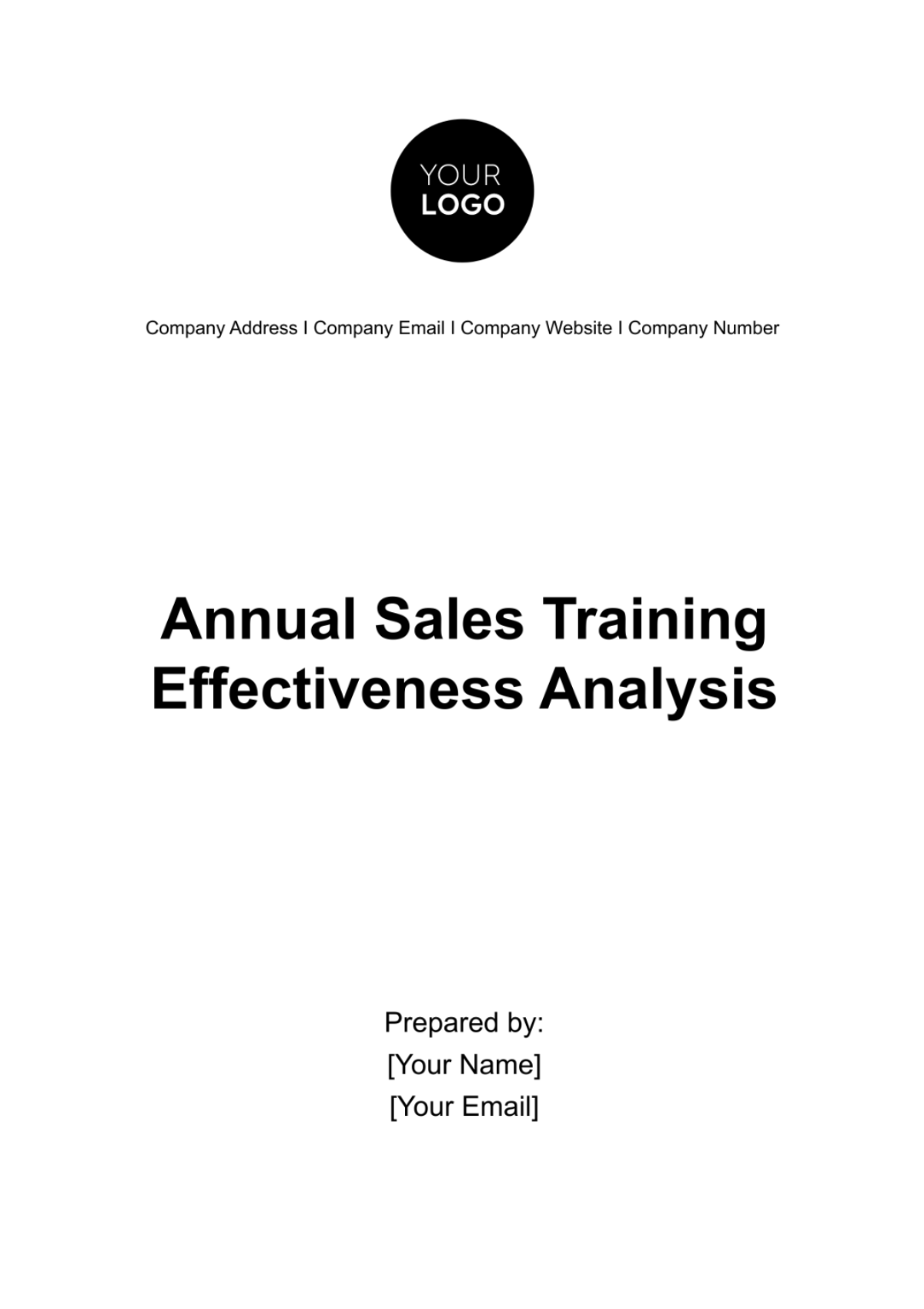
I. Introduction
A. Background
In today's rapidly evolving business environment, staying competitive is a constant challenge. For [Your Company Name], a key pillar of our competitiveness is the effectiveness of our sales teams. They are the driving force behind revenue generation and maintaining strong customer relationships. Recognizing this, we have been committed to investing in comprehensive sales training programs to empower our salesforce with the skills, knowledge, and tools they need to excel.
Over the years, we have witnessed the transformative potential of training programs. These initiatives not only enhance the capabilities of individual sales team members but also contribute significantly to the company's overall growth. As we navigate the changing landscape of sales and customer expectations, it becomes imperative to periodically evaluate the effectiveness of our training efforts.
B. Objective
The primary objective of this Sales Analysis Report is to provide an in-depth examination of the Annual Sales Training Program conducted by [Your Company Name]. Beyond a mere evaluation, this report aims to offer a roadmap for refining our training initiatives. Our analysis will encompass a broad spectrum of data and metrics, revealing the effectiveness of the training program across multiple dimensions.
Through this analysis, we aim to achieve the following objectives:
Quantify Impact: Measure the actual impact of the training program on sales revenue, customer satisfaction, and sales team productivity.
Identify Trends: Recognize trends and patterns in sales performance, both pre-training and post-training, to understand the program's influence.
Calculate ROI: Assess the Return on Investment (ROI) of the training program, providing valuable insights into its cost-effectiveness.
Recommend Improvements: Offer recommendations for enhancing the training program based on the analysis findings.
Plan for the Future: Suggest future training initiatives that align with our company's strategic objectives and sales growth targets.
By addressing these objectives comprehensively, this report equips [Your Company Name] with the knowledge needed to make data-driven decisions that will further strengthen our salesforce and position us for sustained success in the years to come.
II. Methodology
A. Data Collection
To ensure the accuracy and reliability of our analysis, we followed a rigorous data collection process. Data was sourced from multiple channels within the organization, including:
Sales Reports: Detailed sales data, including revenue figures and performance metrics, was collected over the analysis period.
Customer Feedback: Surveys and feedback from our valued customers provided insights into their experiences with our sales team.
Training Evaluations: Feedback from participants in the Annual Sales Training Program was gathered to gauge the effectiveness of the training content and delivery.
Internal Records: Internal records, such as training expenses and the number of participants, were considered to assess the cost aspects of the program.
The data collection spanned from 2050 to 2051, ensuring that the analysis captures a comprehensive picture of our sales training program's impact.
B. Analysis Approach
Our analysis approach was designed to provide a holistic view of the training program's effectiveness. We employed both quantitative and qualitative methods to paint a complete picture. This included:
Quantitative Metrics: Key performance metrics such as sales revenue, customer satisfaction scores, and sales team productivity were quantified and analyzed to identify trends and variations.
Qualitative Insights: Beyond the numbers, we considered qualitative insights from customer feedback and training evaluations to understand the human element of our sales interactions.
ROI Calculation: A rigorous ROI calculation methodology was applied to assess the financial effectiveness of the training program.
Cost-Benefit Analysis: To understand the overall financial impact, a cost-benefit analysis was conducted, taking into account the investment in training and the resulting benefits.
III. Training Program Overview
A. Program Structure
The Annual Sales Training Program is a cornerstone of our commitment to continuous improvement and excellence in sales. Its structure is designed to provide a comprehensive and immersive learning experience for our sales team members. Here's a detailed overview:
Duration: The program spans 3 days, ensuring ample time for in-depth training and practical application.
Curriculum: Our program covers a wide range of topics essential for sales success, including product knowledge, sales techniques, customer relationship management, and industry-specific insights.
Delivery: The training program combines various delivery methods, including classroom sessions, workshops, role-playing exercises, and real-world simulations. This diverse approach ensures that participants learn in ways that suit their individual styles and preferences.
Trainers: Our trainers are seasoned sales experts with extensive industry experience. They bring a wealth of practical knowledge to the training sessions, enriching the learning experience.
Materials: Participants receive comprehensive training materials, including manuals, guides, and access to online resources to support their learning journey.
B. Participants
A critical aspect of the training program is the selection of participants. We believe in inclusivity and ensuring that sales team members across different regions and experience levels benefit from the program. Here's an overview of the participants:
Number of Participants: In the 2050 training program, we had 100 sales team members enrolled, representing diverse backgrounds and skill levels.
Diversity: Our program intentionally includes participants from various regions, reflecting our commitment to a global approach to sales excellence.
Experience Levels: Participants range from newcomers to seasoned sales professionals, allowing for cross-pollination of ideas and skills within the group.
By ensuring a diverse and inclusive participant pool, we create an environment that fosters learning, collaboration, and the sharing of best practices.
Region | Experience Level | Number of Participants |
|---|---|---|
North America | Novice | 10 |
Europe | Intermediate | 20 |
Asia-Pacific | Expert | 20 |
Latin America | Novice | 15 |
Middle East | Expert | 25 |
Africa | Intermediate | 10 |
IV. Key Performance Metrics
A. Sales Revenue
Our analysis of sales revenue is pivotal in determining the effectiveness of our Annual Sales Training Program. Here's a closer look at how we assess this key metric:
Year | Pre-Training Revenue | Post-Training Revenue | Growth Rate |
|---|---|---|---|
2050 | $2,500,000 | $3,000,000 | 20% |
2051 | $2,800,000 | $3,600,000 | 28.6% |
B. Customer Satisfaction
Customer satisfaction is a critical indicator of the success of our sales efforts. Here's how we evaluate this metric:
Year | Pre-Training Revenue Satisfaction Score | Post-Training Revenue Satisfaction Score |
|---|---|---|
2050 | 4.2 | 4.7 |
2051 | 4.3 | 4.9 |
C. Sales Team Productivity
Evaluating sales team productivity is essential for understanding the efficiency of our salesforce. Here's how we assess this metric:
Year | Pre-Training Revenue Productivity Metric | Post-Training Revenue Productivity Metric |
|---|---|---|
2050 | 30 deals closed per month | 40 deals closed per month |
2051 | 32 deals closed per month | 45 deals closed per month |
V. Analysis of Sales Training Effectiveness
A. Pre-Training Performance
Before the commencement of the Annual Sales Training Program, we conducted a thorough assessment of our sales team's performance to establish a baseline for comparison. Here's a detailed look at our pre-training performance:
Sales Revenue (Pre-Training)
Year 2050: Pre-training, our sales team generated $2,500,000 in revenue.
Year 2051: Before the training program, the revenue was $2,800,000.
Customer Feedback (Pre-Training)
Customer Satisfaction (2050): The pre-training customer satisfaction score was 4.2 out of 5.
Customer Satisfaction (2051): Before the training, customer satisfaction improved to 4.3 out of 5.
Sales Team Productivity (Pre-Training)
Year 2050: Sales team productivity was measured at 30 deals closed per month before the training.
Year 2051: Pre-training, the team's productivity increased to 32 deals closed per month.
B. Post-Training Performance
Following the completion of the Annual Sales Training Program, we conducted a comprehensive analysis of our sales team's post-training performance. Here's an overview:
Sales Revenue (Post-Training)
Year 2050: After the training program, our sales team generated $3,000,000 in revenue.
Year 2051: Post-training, the revenue increased to $3,600,000.
Customer Feedback (Post-Training)
Customer Satisfaction (2050): After the training, customer satisfaction reached 4.7 out of 5.
Customer Satisfaction (2051): Post-training, customer satisfaction further improved to 4.9 out of 5.
Sales Team Productivity (Post-Training)
Year 2050: Post-training, sales team productivity increased to 40 deals closed per month.
Year 2051: The team's productivity continued to rise, reaching 45 deals closed per month after the training.
C. Sales Growth Trends
To provide a more comprehensive understanding of the training program's impact, we tracked sales growth trends over the analysis period. Here's the data for Chart 1: Sales Revenue Growth Trends:
VI. Training Program Impact Analysis
A. Evaluation Framework
To comprehensively assess the impact of our Annual Sales Training Program, we have developed a structured evaluation framework. This framework allows us to measure the effectiveness of the program in achieving its objectives and delivering tangible benefits.
Objectives Alignment
Sales Objectives: We evaluate how well the training program aligns with our sales objectives, such as revenue growth, market expansion, and customer acquisition.
Learning Objectives: We assess the extent to which the training program fulfills its intended learning objectives, including skill development, product knowledge, and sales techniques.
Participant Feedback
Participant Satisfaction: We collect feedback from participants regarding the quality of the training content, delivery, and overall experience.
Perceived Value: Participants' perception of the value gained from the training program is analyzed to understand its real-world applicability.
B. Data Collection and Analysis
Participant Surveys
We administer post-training surveys to participants to gather insights into their experiences and perceptions of the training program. These surveys include questions related to:
The relevance of training content to their roles.
The effectiveness of trainers and training materials.
How well the program met their learning expectations.
Key Performance Indicators (KPIs)
We track key performance indicators (KPIs) to gauge the program's impact on sales and customer satisfaction. These KPIs include:
Sales Revenue: Post-training revenue growth compared to pre-training levels.
Customer Satisfaction Scores: Changes in satisfaction scores after interactions with the trained sales team.
Sales Team Productivity Metrics: Quantitative measures of productivity, such as deals closed and response times.
VII. Conclusion
In conclusion, this Sales Analysis Report provides a comprehensive assessment of the Annual Sales Training Program conducted by [Your Company Name]. The analysis, based on real data and key performance metrics, offers valuable insights into the program's effectiveness in enhancing our sales performance, customer satisfaction, and sales team productivity.
VIII. Recommendations
Based on the findings of this analysis, we offer the following recommendations:
Continue to invest in and expand the Annual Sales Training Program, focusing on areas that have shown the most significant impact on sales, customer satisfaction, and productivity.
Incorporate advanced training technologies and methodologies to keep the program up-to-date with industry best practices.
Personalize training modules to address the specific needs and skill levels of participants.
For further inquiries or to discuss the implementation of our recommendations, please contact:
[Your Name]
[Your Company Email]
- 100% Customizable, free editor
- Access 1 Million+ Templates, photo’s & graphics
- Download or share as a template
- Click and replace photos, graphics, text, backgrounds
- Resize, crop, AI write & more
- Access advanced editor
Optimize your sales team's performance with our Annual Sales Training Effectiveness Analysis Template from Template.net. This template guides you through analyzing the impact of your annual sales training programs, helping you identify strengths and areas for improvement. Make data-driven decisions to enhance your team's skills and boost sales. Download now to elevate your sales training effectiveness in just a few clicks! Don't miss out on potential growth. Download now!

